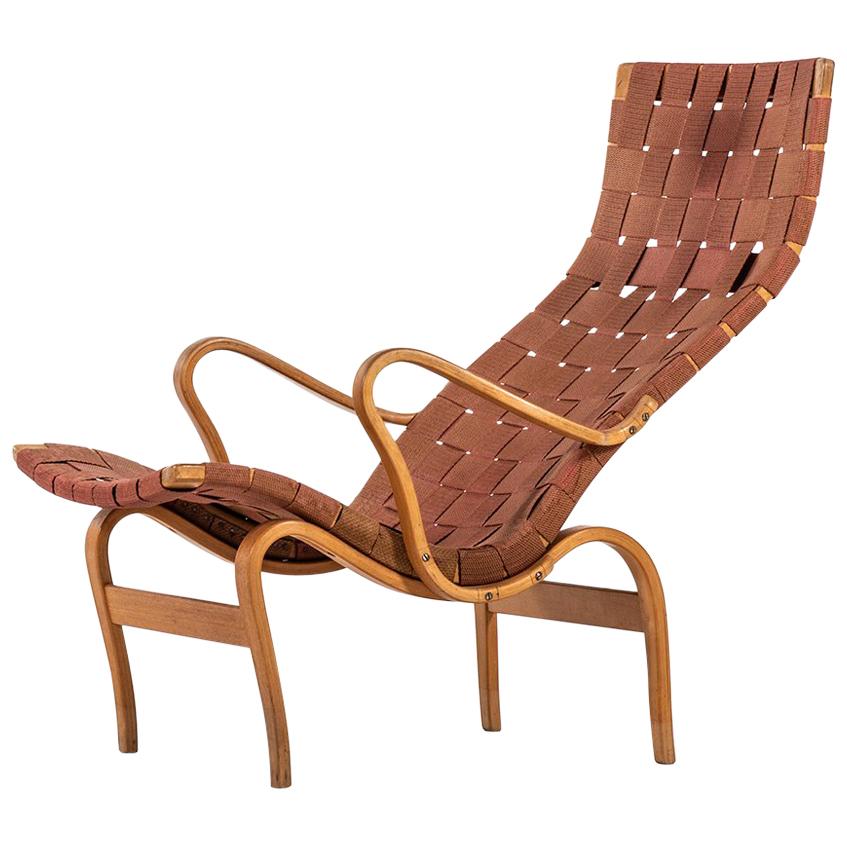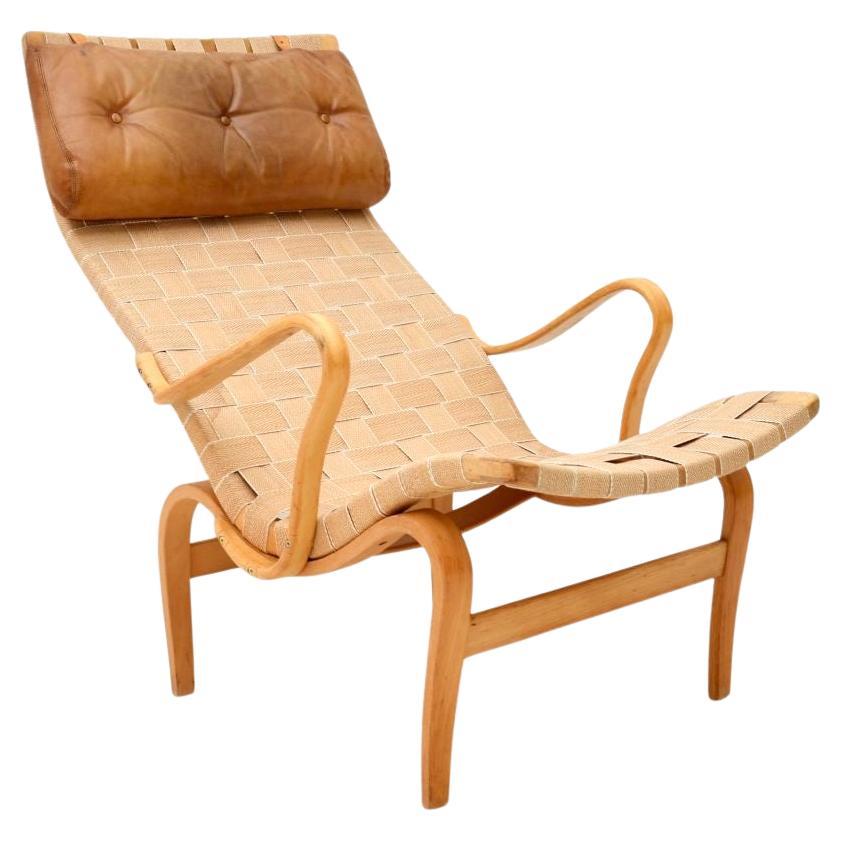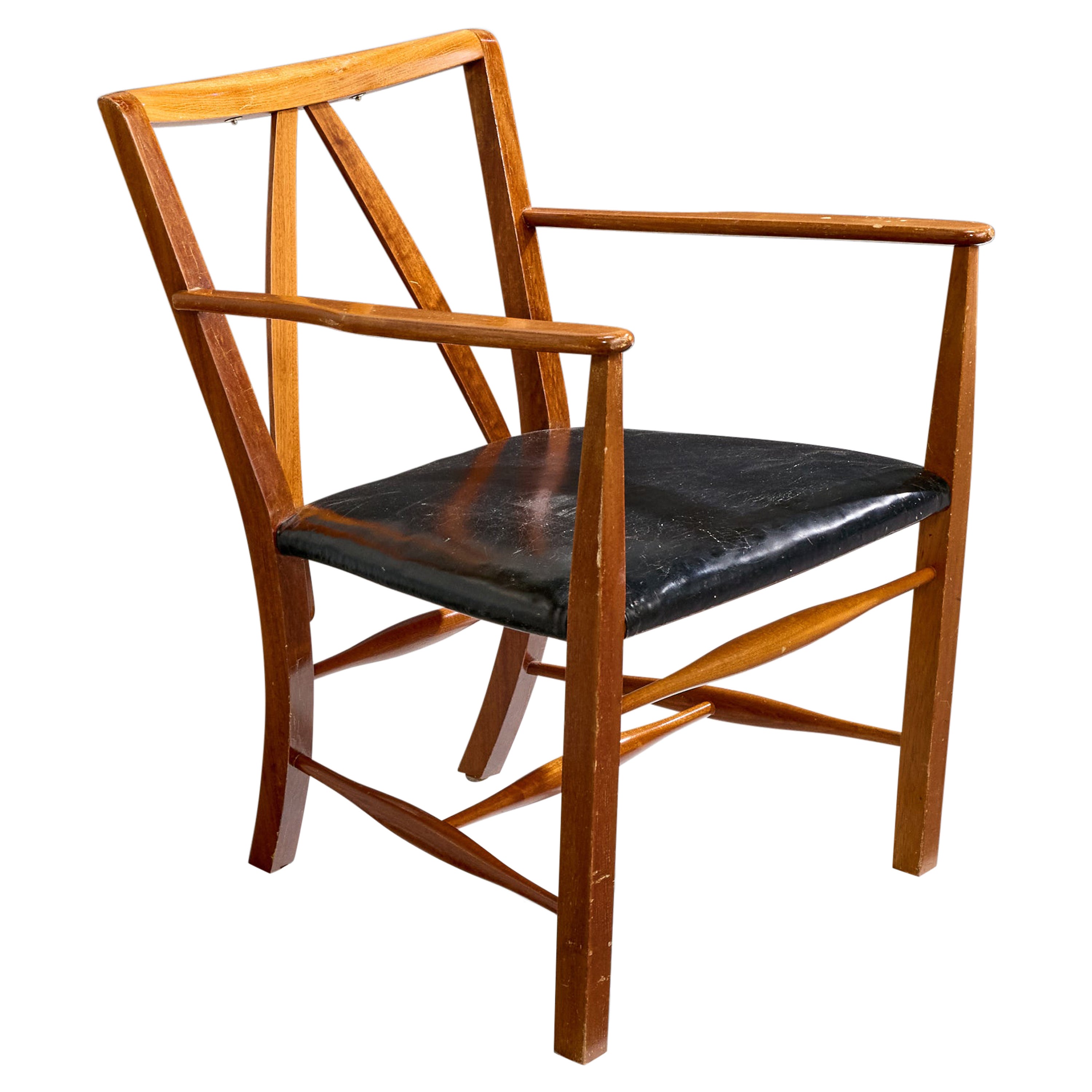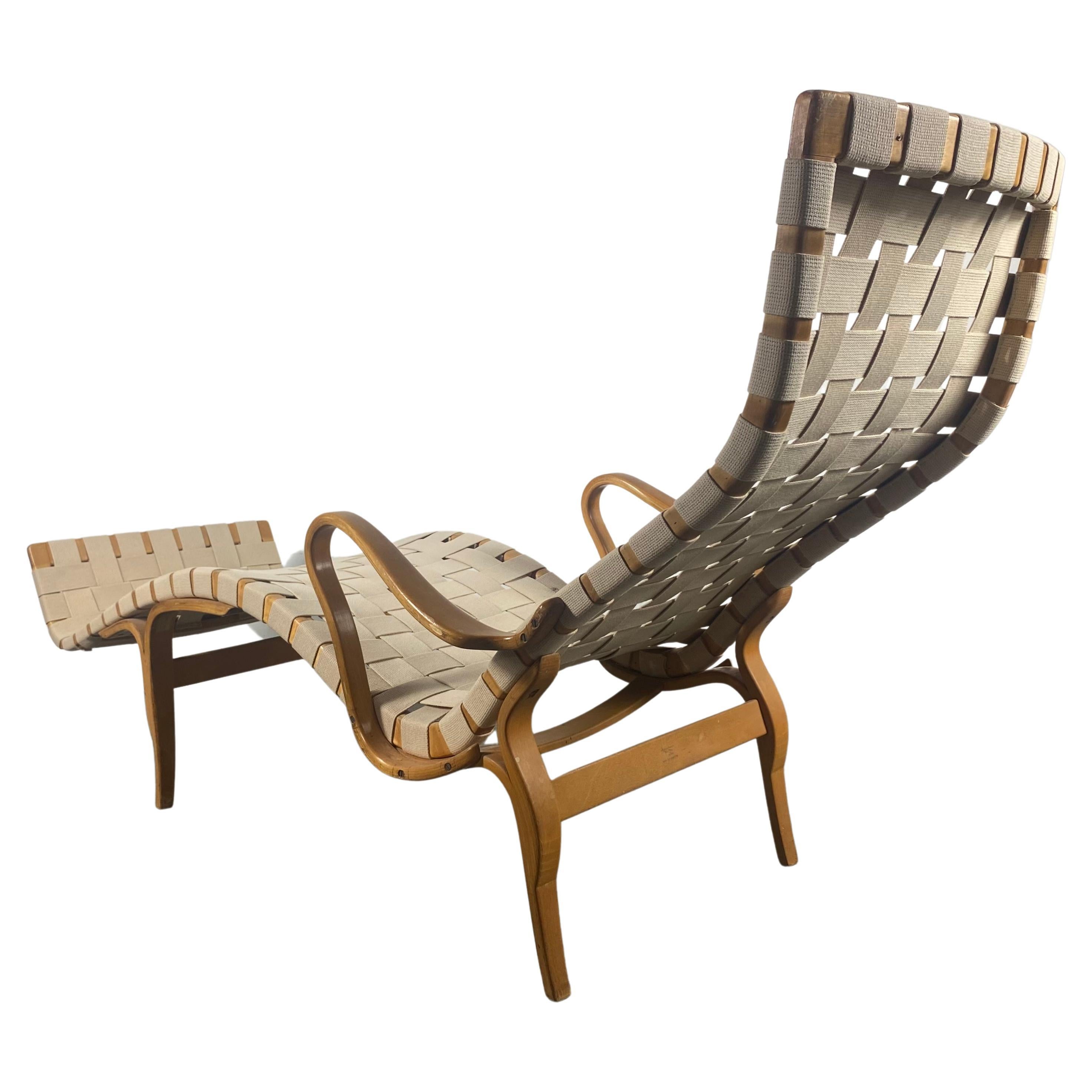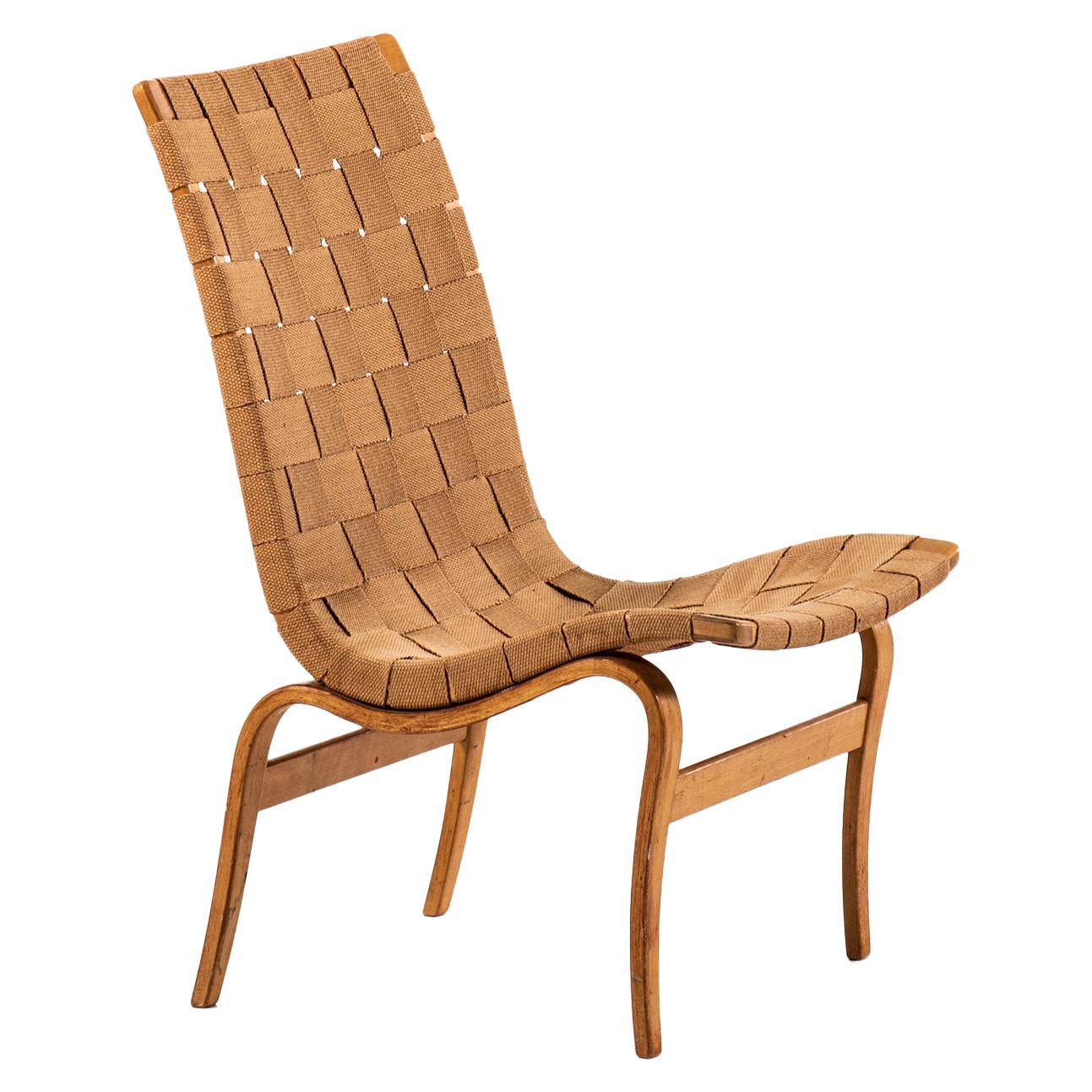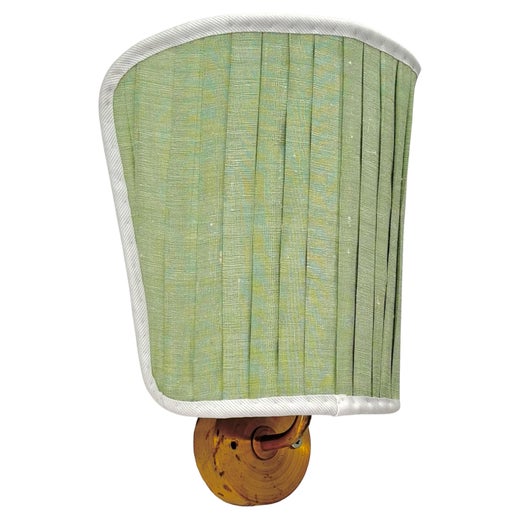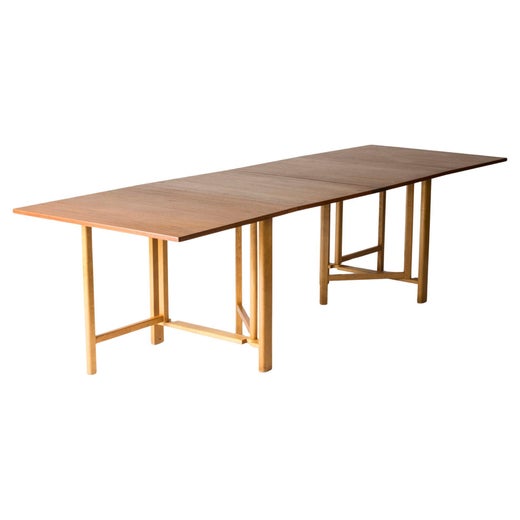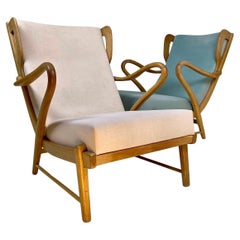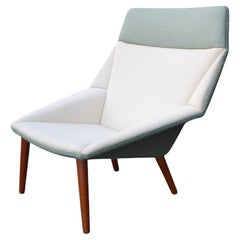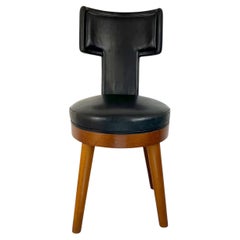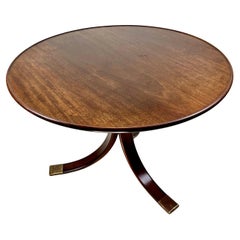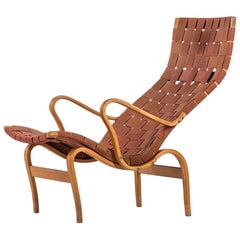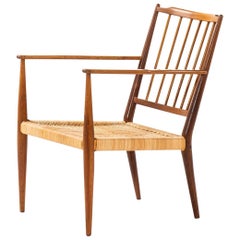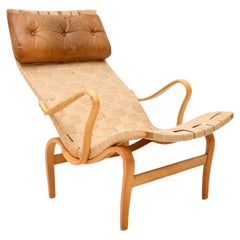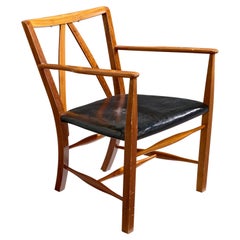Bruno Matthsson "Pernilla" Easy chair by Karl Mathsson 1944 Josef Frank cushion
About the Item
- Creator:Josef Frank (Designer),Bruno Mathsson (Designer)
- Dimensions:Height: 36.23 in (92 cm)Width: 25.01 in (63.5 cm)Depth: 38.59 in (98 cm)Seat Height: 15.75 in (40 cm)
- Style:Scandinavian Modern (Of the Period)
- Materials and Techniques:
- Place of Origin:
- Period:
- Date of Manufacture:1944
- Condition:Reupholstered. Wear consistent with age and use. Minor fading. Head rest cushion has been redone recently.
- Seller Location:Brønshøj, DK
- Reference Number:1stDibs: LU10081242474862
Josef Frank
Austrian architect and furniture and fabric designer Josef Frank was a leading voice for a gentle, humane modernism. His advocacy of warm, comfortable, eclectically styled environments was highly influential in his adopted country of Sweden, and it’s now widely regarded as a harbinger of the backlash against doctrinaire modernism and the embrace of the homespun that occurred in the late 1960s.
The son of a successful Viennese textile manufacturer, Frank studied architecture at Vienna University of Technology, graduating in 1910. From the first years of his practice, he marched counter to the orderly, symmetrical architectural layouts and decors prescribed by contemporaries such as Adolf Loos.
Frank drafted rooms of varying shapes and called for flexible interior-design arrangements. His furniture pieces are light and easy to move — and his chairs are always made of wood, most often with lushly curved steam-bent arms and slatted backs. Frank openly loathed the tubular steel furnishings and “machine for living” aesthetic promoted by Le Corbusier and Ludwig Mies van der Rohe and other Bauhaus principals. “The home must not be a mere efficient machine,” Frank once said. “It must offer comfort, rest and coziness…. There are no puritan principles in good interior decoration.”
Frank — who was Jewish — sensed the dire implications of the rise of Nazism in Germany and Austria, and in 1933 he moved to Stockholm with his Swedish wife, Anna. He became the design chief for the furnishings maker Svenskt Tenn and found a perfect match culturally for his brand of simple, relaxed and bright creations. Like many modernists — notably Charles and Ray Eames and Alexander Girard — Frank had a deep love of folk art, which influenced his designs for a wide array of colorful, richly patterned upholstery fabrics, many based on the classic “Tree of Life” motif.
In all his designs, Frank took inspiration from a broad variety of sources. In his furniture, one can discern traces of Asian patterns, Rococo, Italian Renaissance, Scandinavian handicrafts and even Chippendale pieces. As such, the work of Frank — the friendly modernist — is at home in any type of décor.
Find vintage Josef Frank pillows, armchairs, floor lamps and other furniture on 1stDibs.
Bruno Mathsson
As the descendant of four generations of Swedish master cabinetmakers, Bruno Mathsson was born to design furniture. Mathsson was known as a methodical perfectionist who made usefulness the fundamental attribute of his iconic lounge chairs, tables, armchairs and other works, yet he was also a ceaseless experimenter, who constantly searched for improvements in form, materials and methods of design.
Like the Finnish designer Alvar Aalto, Mathsson was one of the first Scandinavians to embrace undulating, biomorphic forms in furniture. His early pieces such as the Eva and Pernilla series of chairs incorporate dramatically flowing bent beechwood frames, making them some of the most instantly recognizable works of 20th-century design.
Mathsson was also a pioneer of ergonomics — he is said to have based the contours of his chairs on the impression his body made when he sat in a snow bank — and used supple, accommodating woven webbing for seats. His concern for practicality is shown by pieces such as the Maria table. An elegant design with gate legs and hinged leaves, the table measures more than nine feet long when fully extended, but folds down to just nine inches in thickness.
From the mid-1940s through the 1950s, Mathsson focused on architecture, designing and building houses with insulated, triple-glazed window walls and heated floors — construction that flew in the face of traditional wood-clad Swedish residential design, and consequently met with some skepticism. He returned to furniture in the 1960s, employing an entirely new suite of materials: Stainless-steel framing and mesh seats feature in pieces like the Jetson chair; with the mathematician Piet Hein, Mathsson designed the Super-Elliptical table, which has a laminate top and four-part tubular steel legs that sprout like flower stems from a single base.
Bruno Mathsson’s stylistic flexibility as a designer made him a creator whose pieces meet all tastes and needs.
Find vintage Bruno Mathsson dining tables, seating and other furniture on 1stDibs.
- ShippingRetrieving quote...Shipping from: København, Denmark
- Return Policy
More From This Seller
View AllVintage 1940s Danish Scandinavian Modern Wingback Chairs
Fabric, Oak
Mid-20th Century European Mid-Century Modern Armchairs
Fabric, Teak
Vintage 1930s European Art Deco Chairs
Leather, Mahogany
Vintage 1930s Danish Art Deco Coffee and Cocktail Tables
Brass
Vintage 1950s Danish Mid-Century Modern Desks and Writing Tables
Brass
Vintage 1950s Danish Mid-Century Modern Desks and Writing Tables
Brass
You May Also Like
Vintage 1940s Swedish Scandinavian Modern Lounge Chairs
Papercord, Birch
Vintage 1950s Swedish Scandinavian Modern Lounge Chairs
Cane, Mahogany
Vintage 1960s Swedish Mid-Century Modern Lounge Chairs
Leather, Canvas, Bentwood
Vintage 1950s Swedish Mid-Century Modern Lounge Chairs
Faux Leather, Mahogany
Vintage 1940s Swedish Mid-Century Modern Chaise Longues
Canvas, Beech
Vintage 1940s Swedish Scandinavian Modern Lounge Chairs
Hemp, Birch
